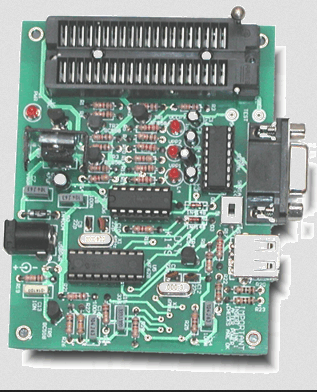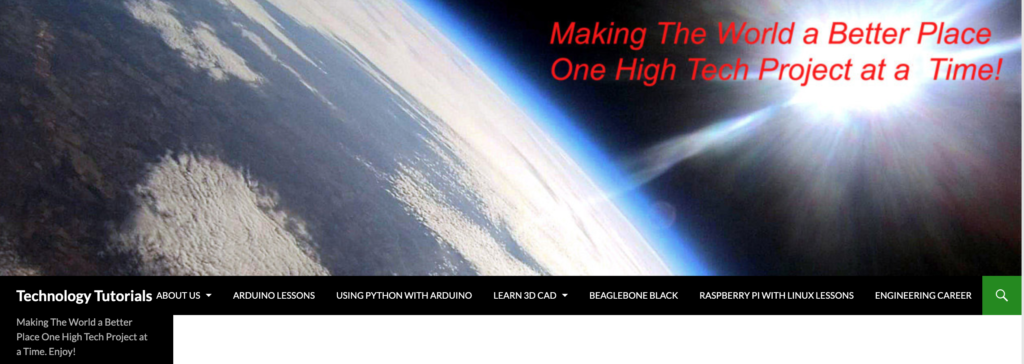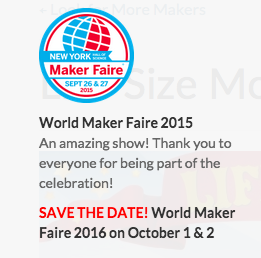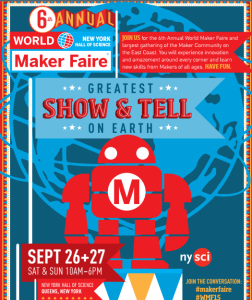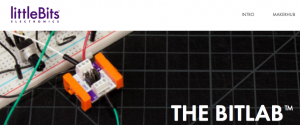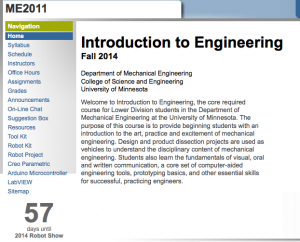Category Archives: engineering
SunFounder Maker Education
Why Elon Musk Created Neuralink (feat. Real Science)
Technology Tutorials: Arduino and Raspberry Pi - top tech boy
IEEE Learning Networks
79 results in Catalog Career Development
-
3D Printing: From Prototype to Production
Online In Career Development

3D printing technologies are not new, but thanks to a recent convergence of simple-to-use design software, improving materials, and shrinking hardware costs, 3D printing is becoming mainstream. Creative individuals, entrepreneurs, teachers, surgeons and established businesses use 3D printing technologies to re-define art, medicine, product design and education. In the future, we will see the emergence of new business models and a new aesthetic as 3D printing technologies remove traditional manufacturing barriers of cost, time and skill. The electronics industry is adopting 3D printing to extend production capabilities that are scalable and complimentary with current manufacturing solutions. 3D printing technologies also open up new avenues for directly functionalizing component parts.InstructorsMelba KurmanMike O'ReillyPublication Year: 2014Earn 1 Professional Development Hour (PDH) for completing the webinar (form completion required)
English (United States)
-
3D Printing: Hype, Hope, or Happening
Online In Career Development

3D-Printing or Additive Manufacturing has received significant media attention during the last five years. In 2012 the Economist published an article on this technology which stated that it will lead to a 3rd industrial revolution. A number of companies are now commercializing materials, design/software and 3D-Printers, and these are being used in a number of manufacturing sectors including aerospace, medical, and construction and consumer products. In China alone the 3D-Printer market is expected to be worth over 10Bn RMB by 2018, and the Government has recently initiated a policy to provide every school with 3D-printing capabilities. But what impact will 3D-printing have on the electronics packaging and manufacturing community? Will 3D-Printing be just hype, or is there hope that these technologies will impact the way we manufacture and package electronic systems, or are developments already being commercialized? Will 3D-Printing of electronic circuits or components be the next phase of the additive manufacturing revolution? This presentation will discuss the challenges for design tools, materials, and 3D-printing processes in the context of electronics manufacturing/packaging. In particular, printing and micro-assembly systems are required that can accurately deposit and cure both functional and structural materials and place/embed components in an integrated manner within a single platform. The performance and electrical behavior of printed conductive materials is also a challenge as they must meet the performance of materials currently used. And of course the overall quality and reliability of 3D-printed electronic systems must meet industry requirements. This presentation will detail the current status of 3D-printing for the manufacture of electronic systems, and provide some insights on how it may impact our community in the future.InstructorsChris BaileyChris Bailey is Professor of Computational Mechanics and Reliability at the University of Greenwich, London, United Kingdom. He received his PhD in Computational Modelling from Thames Polytechnic in 1988, and an MBA in Technology Management from the Open University in 1996. Before joining Greenwich in 1991, je worked for three years at Carnegie Mellon University (USA) as a research fellow in materials engineering.One of his main achievements with regards to EPS was helping to establish the Region 8 flagship conference ESTC (Electronics System-integration Technology Conference). He was the Programme Chair for the first conference held in Dresden, and was the General Chair for the 2008 conference in London. In 2007 he was the local chair for the IEEE EPS sponsored EuroSime conference held in London, and since 2009 have worked with the EuroSime team as co-editor of the proceedings and track chair for multi-physics modelling.Since 2010 he has been a member of the EPS (CPMT) Board of Governors. During his first term on the BoG, he also took on the role of Strategic Director for Student Programs with the aim of supporting students involved in EPS activities worldwide. Particular achievements include arranging financial support for student attendees at the International Spring Seminar on Electronics Technology (ISSE) as well as promoting student membership at events such as ECTC, EPTC and ESTC.Jie XueJie Xue is currently the Sr. director of Component Quality and Technology Group at Cisco Systems, Inc., San Jose, California. Her team is responsible for component technology development and qualification of ASIC, network processors and optical modules, as well as the development of advanced semiconductor and packaging technologies. Since joining Cisco in 2000, she has been working on developing high performance flip chip packaging, system-in-package, multi-chip modules, chip-scale-packaging for high reliability networking products. Prior to joining Cisco, Jie held several management and engineering positions in Motorola Inc., working on R&D and product development.Jie received a BS degree from Tsinghua University, a MS and Ph.D. from Cornell University. Her research has resulted in over 80 technical publications and conference presentations and 8 patents. She is an IEEE Fellow as well as IMAPS Fellow. She was the VP of Conferences at IEEE EPS (CPMT) (2010-2011) and VP of Technology since 2012.Publication Year: 2017Earn 1 Professional Development Hour (PDH) for completing the webinar (form completion required)
English (United States)
-
A Moore's Law for Packaging
Online In Career Development

While Silicon has scaled aggressively by over a factor of a few thousand over the last six decades the progress in packaging has been more modest – a linear factor 4-5 in most cases. In this talk, we will examine the reasons for this lag and what we are doing to fix this imbalance. Packaging is undergoing a renaissance where chip-to-chip interconnects can approach the densities of on-chip interconnects. We will discuss the technologies that are making this happen and how these can change our thinking on architecture and future manufacturing. Specifically, we will discuss two embodiments: Silicon as the next generation packaging substrate, and Flexible electronics using fan-out wafer level processing. Finally, we’ll discuss how these developments can help put some intelligence into Artificial Intelligence and bring about changes in Medical Engineering.InstructorSubramanian S. IyerSubramanian S. Iyer (Subu) is Distinguished Professor and holds the Charles P. Reames Endowed Chair in the Electrical Engineering Department at the University of California at Los Angeles and is Director of the Center for Heterogeneous Integration and Performance Scaling (CHIPS). Prior to that he was an IBM Fellow. His key technical contributions have been the development of the world’s first SiGe base HBT, Salicide, electrical Fuses, embedded DRAM and 45nm technology node used to make the first generation of truly low power portable devices. He also was among the first to commercialize bonded SOI for CMOS applications through a start-up called SiBond LLC. He has published over 300 papers and holds over 70 patents. He was a Master Inventor at IBM. His current technical interests and work lie in the area of advanced packaging constructs for system-level scaling and new integration and computing paradigms as well as the long-term semiconductor and packaging roadmap for logic, memory and other devices. He has received several outstanding technical achievements and corporate awards at IBM. He is an IEEE Fellow, an APS Fellow and a Distinguished Lecturer of the IEEE EDS and EPS as well as it treasurer of EDS and a member of the Board of Governors of IEEE EPS. He is also a Fellow of the National Academy of Inventors. He is a Distinguished Alumnus of IIT Bombay and received the IEEE Daniel Noble Medal for emerging technologies in 2012. Publication Year: 2018Earn 1 Professional Development Hour (PDH) for completing the webinar (form completion required)
English (United States)
-
Achieving High Reliability for Lead-Free Solder Joints - Materials Consideration
Online In Career Development

This course covers the detailed material considerations required for achieving high reliability for lead-free solder joints. The reliability discussed includes joint mechanical properties, development of type and extent of intermetallic compounds (IMC) under a variety of material combinations and aging conditions and how those IMCs affect the reliability. The failure modes, thermal cycling reliability, and fragility of solder joints as a function of material combination, thermal history, and stress history will be addressed in details, and novel alloys with high reliability will be presented. The emphasis of this course is placed on the understanding of how the various factors contributing to the failure modes, and how to select proper solder alloys and surface finishes for achieving high reliability.InstructorDr. Ning-Cheng LeeNing-Cheng Lee is the Vice President of Technology of Indium Corporation. He has been with Indium since 1986. Prior to joining Indium, he was with Morton Chemical and SCM. He has more than 30 years of experience in the development of fluxes and solder pastes for SMT industries. In addition, he also has very extensive experience in the development of underfills and adhesives. He received his PhD in polymer science from University of Akron in 1981, and BS in chemistry from National Taiwan University in 1973.Ning-Cheng is the author of “Reflow Soldering Processes and Troubleshooting: SMT, BGA, CSP, and Flip Chip Technologies” by Newnes, and co-author of “Electronics Manufacturing with Lead-Free, Halogen-Free, and Conductive-Adhesive Materials” by McGraw-Hill. He is also the author of book chapters for several lead-free soldering books. He received 1991 award from SMT Magazine and 1993 and 2001 awards for best proceedings papers of SMI or SMTA International Conferences, 2008 and 2014 awards from IPC for Honorable Mention Paper – USA Award of APEX conference, and 2010 Best Paper Award of SMTA China South Conference. He was honored as 2002 Member of Distinction from SMTA, 2003 Lead Free Co-Operation Award from Soldertec, 2006 Exceptional Technical Achievement Award from CPMT, 2007 Distinguished Lecturer from CPMT, 2009 Distinguished Author from SMTA, 2010 Electronics Manufacturing Technology Award from CPMT, 2015 IEEE Senior Member, 2015 Founder’s Award from SMTA, and 2017 IEEE Fellow. He has served on the board of governors for CPMT and SMTA board of directors. Among other editorial responsibilities, he serves as editorial advisory board of Soldering and Surface Mount Technology, Global SMT & Packaging and as associate editor for IEEE Transactions on Components Packaging Manufacturing Technology. He has numerous publications and frequently gives presentations, invited to seminars, keynote speeches and short courses worldwide on those subjects at international conferences and symposiums. Publication Year: 2018Earn 1 Professional Development Hour (PDH) for completing the webinar (form completion required)
English (United States)
-
An Introduction to Leadership: A Primer for the Practitioner
Online In Career Development, Leadership, and 1 more (Show All)

Leadership can be defined as the ability of an individual to influence, motivate, and enable others to contribute toward the effectiveness and success of the organizations of which they are members. Leadership is not dependent on title or formal authority. All too often we think of leadership as something we will develop and apply later rather than earlier in our career. This applies to both leadership within our chosen technical discipline and leadership of our profession. In the early stages of a career, most people naturally focus on the technical aspects of their career. They begin their careers applying the technical disciplinary knowledge and skills they acquired in college and focus on those aspects that will ensure promotion, tenure, and success early in their career. However, leadership is something that should be considered and fostered early and often throughout our entire professional career. Leadership is a subject that has been studied, discussed, and debated across a wide variety of disciplines for centuries. There are numerous books, articles, and self-improvement courses on the subject so many that the interested student of the broad subject of leadership might at first be discouraged. The purpose of this tutorial is not to be exhaustive but instead to provide a practical guide to leadership while providing references to some of the seminal works that form the foundation for both the theory and practice of leadership.Instructor Barry L. ShoopBarry L. Shoop is Professor of Electrical Engineering and Deputy Head of the Department of Electrical Engineering and Computer Science at the United States Military Academy at West Point. Currently as Professor and Deputy Head he is responsible for an undergraduate academic department supporting ABET accredited programs in electrical engineering, computer science, and information technology. He received the B.S. from the Pennsylvania State University, M.S. from the U.S. Naval Postgraduate School, and Ph.D. from Stanford University, all in electrical engineering. He is a Senior Member of the IEEE and a Fellow of both the Optical Society of America and the International Society for Optical Engineering.Publication Year: 2010ISBN: 978-1-4244-6202-5
English (United States)
-
Automotive Sensor Packaging Trends
Online In Sensors, Career Development, and 2 more (Show All)

An increasing number of sensors are used in automotive applications. Familiar sensors applications include air bags and tire pressure sensors. New automotive safety features include improved self-diagnostics, crash avoidance technology, and advanced driver assistance. This translates into increase use of image sensors, LiDAR, and radar. Multiple combinations of sensors are anticipated. What types of semiconductor packages are used in these automotive electronics and what are the future challenges as new package types are adopted? This presentation discusses some of the opportunities in automotive packaging and the challenges in meeting automotive specifications. InstructorJan VardamanJan Vadarman is president and founder of TechSearch International, Inc., which has provided market research and technology trend analysis in semiconductor packaging since 1987. She is the co-author of How to Make IC Packages (by Nikkan Kogyo Shinbunsha), a columnist with Printed Circuit Design & Fab/Circuits Assembly, and the author of numerous publications on emerging trends in semiconductor packaging and assembly. She is a senior member of IEEE CPMT (now EPS) and is an IEEE CPMT (EPS) Distinguished Lecturer. She is a member of SEMI, IMAPS, and MEPTEC. She received the IMAPS GBC Partnership award in 2012. Before founding TechSearch International, she served on the corporate staff of Microelectronics and Computer Technology Corporation (MCC), the electronics industry’s first pre-competitive research consortium. Publication Year: 2017Earn 1 Professional Development Hour (PDH) for completing the webinar (form completion required)
English (United States)
-
Blockchain Governance and Human Rights
Online In Career Development, Computing, and 3 more (Show All)

This module provides ways to think about how the architecture of blockchain technologies shapes governance processes and the forging and maintenance of a legal system. Similar to the Internet, blockchain technologies challenge our ideas about the relation between technology, governance, and the rule of law. Blockchain-based systems could potentially impact human rights provisions such as the right to nationality and to privacy. After completing this module, participants will have gained insight into: The relation between blockchain technologies, governance, and the rule of law, The potential impact of blockchain technologies on the human rights of nationality and privacy, The overall findings of the five modules of this online course.InstructorsQuinn DuPontQuinn DuPont studies human and social dimensions of cybersecurity, cryptography, and code. He is currently a postdoctoral Research Associate at the School of Information, University of Washington. He has a PhD in Information Science (Toronto), and is an ALA-accredited librarian (Western), with a decade of industry experience as a Senior Information Specialist at IBM, an IT consultant, and a usability and experience designer. His current research focuses on Bitcoin, cryptocurrencies, and blockchain technologies. He is a member of the Standards Council of Canada, ISO, and IEEE Blockchain committees. His book, Cryptocurrencies and Blockchains (Polity), is a scholarly survey of cryptocurrencies and blockchain technologies in society.Wessel ReijersWessel Reijers studies philosophy and ethics of technology and has a strong interest in the study of financial and governance technologies. He is currently a PhD researcher at the ADAPT Centre, School of Computing, Dublin City University in Ireland. His current research focuses on the integration of ethics in research and innovation activities. One outcome of this research is the Ethics Canvas, which can be used by researchers to discuss ethical impacts of their work. He has published in several academic journals on the topics of hermeneutic philosophy of technology, blockchain technologies, social contract theory, the digital commons and ethics in research and innovation.Publication Year: 2018
English (United States)
-
Building Engineering Leaders in the 21st Century
Online In Career Development, Leadership, and 1 more (Show All)
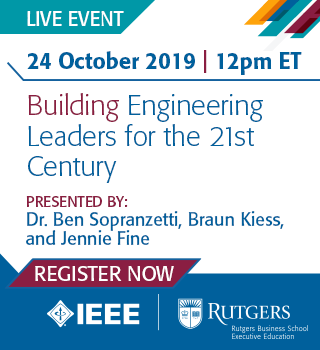
How do you identify emerging engineering leaders in your company?What do you do to help them learn the business skills they need to be successful in leadership roles?In order to lead effectively, your leaders need more than engineering skills. They need to work effectively with business groups across the organization. How do you make sure your next generation of leaders has these skills?You are invited to participate in a live complimentary IEEE webinar entitled, “Building Engineering Leaders in the 21st Century,” presented by Dr. Ben Sopranzetti, Braun Kiess, and Jennie Fine.“Building Engineering Leaders in the 21st Century” will:Show you how to bridge the gap between business and engineering as your team prepares for growth into management rolesOffer modern-day solutions, based on real world business and engineering best practices, that will allow for you to cultivate and grow your company’s emerging talent into a leadership roleInclude a live Q&A session with the presentersBrought to you by IEEE Educational Activities and Rutgers Business School Executive Education.PresentersBen J. SopranzettBen J. Sopranzetti is a Professor of Finance and Assistant Chairman of the Department of Finance and Economics at Rutgers Business School. He received his Ph.D. in finance from the University of Illinois at Urbana-Champaign in 1995. He has over 25 years of international experience in building, valuing, and selling business enterprises. He is an expert in the area of Business Valuation, Investment Banking, Private Equity, and Venture Capital. Sopranzetti is widely respected as a master teacher, and has an outstanding reputation for designing and delivering innovative programs for financial institutions and corporate clients. He is particularly well regarded for his cutting-edge work on valuation, mergers and acquisitions, private equity, cross-cultural negotiations and high-level executive training.Sopranzetti is the recipient of eighteen awards for excellence in teaching. He is a founding member of the Rutgers University Teaching Excellence Center.In 2008, he was honored by BusinessWeek as one of their 21 ""Favorite Professors."" Sopranzetti is the advisor for the Little Investment Bankers of Rutgers (LIBOR), and places 30-40 students per year in front office jobs on Wall Street. In the course of his career, he has been involved in the job placement of over 500 students.Sopranzetti serves on several corporate boards and is a highly regarded valuation consultant and trainer at numerous Wall Street investment banks, including Bank of America, Bank of China, Citibank, CFSB, Goldman Sachs, HSBC, JPMorgan, Morgan Stanley, Rothschild, UBS, and others.In 2000, he founded Innovative Financial Solutions, a boutique investment banking and advisory services firm in Beijing, China, where he served as a managing partner. He sourced, negotiated and closed 19 deals between $25MM and $500MM. In 2006, he was a co-founder of the BEST Institute (Business, Engineering, Science and Technology) at Rutgers University. Since 2009, he has started four companies, and is currently a senior partner at Partners2Market, a high-powered valuation and advisory services company.Braun C. KiessBraun C. Kiess is a successful financial executive, serial entrepreneur, educator and investor. With over 20 years of experience in a diverse range of industries, Kiess’ professional roles have included: Chief Executive Officer (CEO), Chief Financial Officer (CFO), Vice President of Sales & Marketing, and Director of Business Development. Kiess is currently the Co-founder and Chief Financial Officer of RST Automation LLC, the Co-founder and Chief Executive Officer of Pleasant Run Structures, the Founder and Chairman of Rainbow Direct, the Co-founder and Managing Director of Partners2Market LLC (D.B.A. Piermont Valuation Group) and the Co-founder and Managing Partner of Readington Brewery & Hop Farm. To date, Kiess has been a founder or investor in over a dozen start-up companies.Kiess sits on multiple corporate boards and teaches for Rutgers Business School at the undergraduate and graduate level. In addition to being a member of the Rutgers faculty, Kiess is a widely recognized expert on Financial Statement Analysis and Financial Strategy. He is a frequent instructor for Rutgers Business School’s Executive Education and Executive MBA programs.Kiess regularly consults to Fortune 500 companies and IP-based startups on valuation and has testified as an expert witness in forensic valuation and litigation support cases in federal court. Kiess and Sopranzetti are currently coauthoring a book on valuation. Kiess holds a Bachelors of Science degree in Finance (Summa Cum Laude) from Rutgers University and has Masters in Business Administration (MBA) degrees from both Columbia Business School and London Business School."Jennie FineEDP579_fine.jpg"Jennie Fine is the Program Manager for the Rutgers Business School Executive Education Program. Jennie is a seasoned learning and development project manager with substantial experience in all areas of instructional design, project management, and educational program development. She has expertise in adult learning and educational program management, both virtual and classroom based. Jennie has demonstrated success in training and assessment, learning systems, content development, communications, client services, organizational change management, new sales and customer retention, product implementation, usage building, and customer development. Jennie is a specialist at working with large teams of stakeholders to reach alignment and develop clear action plans.Jennie FineJennie Fine is the Program Manager for the Rutgers Business School Executive Education Program. Jennie is a seasoned learning and development project manager with substantial experience in all areas of instructional design, project management, and educational program development. She has expertise in adult learning and educational program management, both virtual and classroom based. Jennie has demonstrated success in training and assessment, learning systems, content development, communications, client services, organizational change management, new sales and customer retention, product implementation, usage building, and customer development. Jennie is a specialist at working with large teams of stakeholders to reach alignment and develop clear action plans.Publication Year: 2019
English (United States)
-
Can Moore's Law for Packaging Replace Moore's Law for ICS?
Online In Career Development

This webinar proposes Moore’s Law for Packaging to replace Moore’s Law for ICs, as this is seen as coming to an end. Moore’s Law for ICs is about scaling transistors to ever smaller sizes, from node to node and interconnecting and integrating these to result in more transistors in smaller chips at lower cost from 300 mm wafers. As transistor scaling and integration comes to an end due to physical, material and electrical limitations, Moore’s Law for Packaging (MLP) can be viewed as interconnecting and integrating smaller chips with the highest transistor density and highest performance at the lowest cost. Package or system scaling is proposed to be one and the same, as the end goal of packaging is a system. Just as Moore’s Law for ICs has two components: number of transistors and cost of each transistor, Moore’s Law for Packaging is proposed to have two components as well: the number of interconnections or I/Os and the cost of each I/O. This webinar lays the ground work for Moore’s Law for Packaging by showing how I/Os have evolved from one package family node to the next, starting with <16 I/Os in 1960s to the current silicon interposers with about 200,000 I/Os. It proposes a variety of ways to extend Moore’s Law such as extending Si interposers and beyond, using glass in panel embedding. As Moore’s Law for Electronic Packaging comes to its own end, this article proposes 3D opto-electronic packaging as the next Moore’s Law for Packaging.InstructorIRao TummalaProf. Rao Tummala is a Distinguished and Endowed Chair Professor Emeritus at Georgia Tech in USA. He is well known as an industrial technologist, technology pioneer, and educator. Prior to joining Georgia Tech, he was an IBM Fellow, pioneering such major technologies as the industry’s first plasma display and industry’ first 100- chip MCM with leading-edge RDL, flipchip and liquid cooling, now called 2.5D. He is the father of LTCC and System-on-Package(SOP) technologies. As an educator, Prof. Tummala was instrumental in setting up the largest and most comprehensive Academic Center in System-On-Package vision for Electronic Systems, funded by NSF as the first and only NSF Engineering Research Center in US in Packaging at Georgia Tech. Prof. Tummala pioneered an integrated approach to research, education and industry collaborations with more than 100 companies in US, Europe, Japan, Korea, Taiwan and China and producing about 1200 Ph.D and MS students . He received many industry, Academic and Professional Society awards including Distinguished Alumni of Illinois, Indian Institute of Science and the highest Faculty award from Georgia Tech—The Distinguished Faculty. He has published about 800 technical papers and invented many technologies that resulted in over 100 patents. He wrote the first modern textbook in packaging,Microelectronics Packaging Handbook(1988); wrote the 1st undergrad textbook, Fundamentals of Microsystem Packaging(2001); and the 1st book introducing the concept of SOP with Prof. Swaminathan, Introduction to System-on-Package( 2006). He was Past President of IEEE EPS and IMAPS. He is an IEEE Fellow and member of National Academy of Engineering in US.Publication Year: 2019Earn 1 Professional Development Hour (PDH) for completing the webinar (form completion required)
English (United States)
-
Career Networking for Technical Professionals
Online In Career Development, Leadership, and 1 more (Show All)

One of the biggest challenges engineers face in their career is the ability (and confidence) to network and build relationships. During this course, engineering career coach Anthony Fasano will: define what networking really is and why it is critical to engineering career development; provide strategies to build lasting relationships; discuss who you should network with; suggest where you can find these other professionals; discuss social networking: what is it and why must you be doing it in your career; help you to let go of beliefs that you may have about networking that are holding you back; and offer strategies for overcoming barriers such as low confidence and English as a second language.InstructorAnthony FasanoAnthony Fasano received B.S. and M.S. in Civil Engineering from Lafayette College and Columbia University. After becoming a partner at an engineering firm at the age of 27, he realized that his success was related largely to the development of his non-technical skills. Mr. Fasano decided to transition his career from designing to inspiring engineers to develop the nontechnical skills crucial to career success. Anthony has written a bestselling book entitled Engineer Your Own Success: 7 Key Elements to Creating an Extraordinary Engineering Career. Publication Year: 2012ISBN: 1-4673-3180-5
English (United States)
This helicopter has dual-crossing rotors for increased precision when placing suspended loads
- It uses a unique double-rotor system in which the two intermeshing rotors cross each other, eliminating the need for a tail rotor.
- These advantages are less costly to maintain than a regular helicopter and make for a lighter and more efficient helicopter.
- Visit INSIDER's homepage for more stories.
How flies walk on ceilings
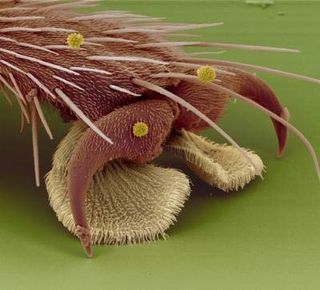
Walking upside-down requires a careful balance of adhesion and weight, and specialized trekking tools to combat the constant tug of gravity.
Each fly foot has two fat footpads that give the insect plenty of surface area with which to cling. The adhesive pads on the feet, called pulvilli, come equipped with tiny hairs that have spatula-like tips. These hairs are called setae.
Scientists once thought that the curved shape of the hairs suggested that flies used them to grip onto the ceiling. In fact, the hairs produce a glue-like substance made of sugars and oils.
Sticky proof
A research team from the German Max Planck Institute for Metals Research recently studied more than 300 species of wall-climbing insects and watched them all leave behind sticky footprints.
|
||
| Mystery Monday | ||
| Each Monday, this LiveScience series explores an amazing aspect of the world around you. Previous articles: |
- How Viruses Invade Us
- How We Smell
- Why We Lie
- Why Ants Rule the World
- The Science of Traffic Jams
- Why Rice Krispies Go Snap, Crackle, Pop!
- The Shocking Truth Behind Static Electricity
- Why the Ground is Brown
- Why Frogs are Green
- How Dolphins Spin, and Why
"There are over one million insect species," team leader Stanislav Gorb told LiveScience. "We suppose that all of them have the secretion, but it is difficult to be 100 percent sure."
Gorb presented the findings at the Annual Meeting of the Society for Experimental Biology in April.
Flies need sticky feet to walk on ceilings, but not so sticky that they get stuck upside down. So each foot comes with a pair of claws that help hoist the gooey foot off the wall.
Flies use several different techniques to get unstuck: pushing, twisting, and peeling its footpads free.
"Methods involving peeling are always the best, because they require less energy to break the contact," Gorb said.
The combination of the feet hairs' rounded tips, the oily fluid, and a four-feet-on-the-floor rule help the inverted insect take steps in the right direction.
Lessons for robofly
Following in the fly's footsteps, robots are on their way to climbing walls.
Gorb's research team worked with a robotics group from Case Western Reserve University to design robotic feet that mimic a fly's footing.
On the bottom of the feet of a 3-ounce robot that's all legs, scientists tacked on a sticky, furry manmade material that resembles the hairy surface of a fly foot. The researchers also taught the robot how to gently peel its foot off a glass wall, just like a demure insect.
"It's the first time a robot has climbed glass in a way that was inspired by an animal," said mechanical engineer Roger Quinn.
Biorobotics at Case Western
CASE WESTERN RESERVE UNIVERSITY
Take a look at some of our best videos!
Tumbleweed
Mini Whegs™
MMALVs
Unmanned Ground Vehicles
Whegs™ II
Magic of Motion
THE PASSWORD IN YOUR EYE -- Mind Blow #90
Wearable Mood Controller -- Mind Blow #96
World Maker Faire 6th Annual
Simulation Driven Engineering
Instructables - Free energy generators
Ladyada: Ask an engineer
EdX Embedded Systems
Enchanted Objects
Structure Sensor – Capture the World in 3D
little bits dyi
The Gloves Project
PU School of Engineering and Applied Science
kits and spares

math works
